Group Show curated by Camille Bardin
Faire Corps,
OCT 21th - DEC 18th, 2021
Online exhibition of the group show curated by Camille Bardin: Faire Corps
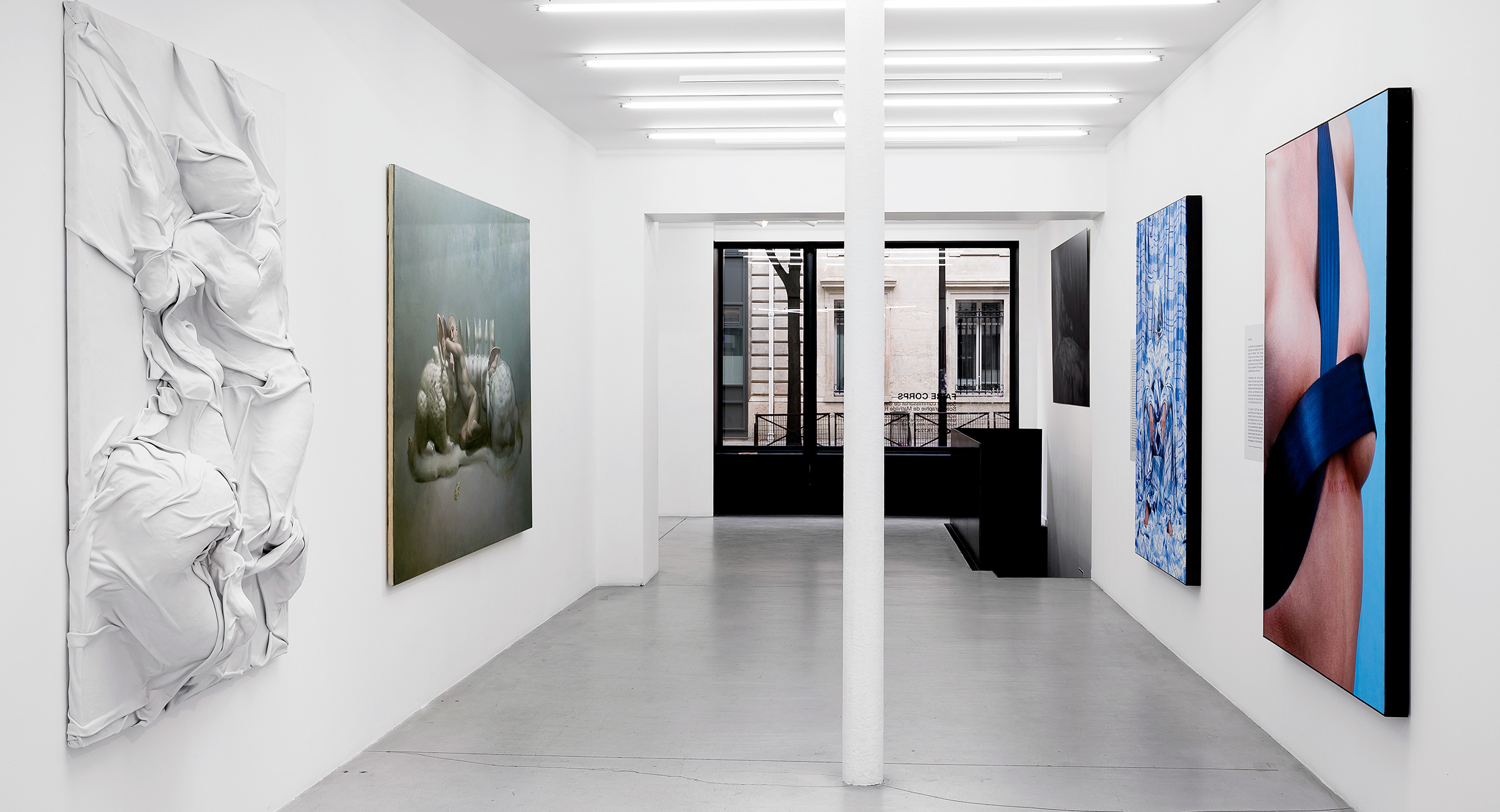
Online
Oct 21, 2021 – Dec 18, 2021
More About:
From October 21st until December 18th, PARIS-B hosted the exhibition “Faire Corps” curated by Camille Bardin, a young art critic who was recently laureate of the Prix AICA. The group show will be putting forth the selected works of ten artists.
INGRID BERTHON-MOINE / SABRINA BELOUAAR / REN HANG / KUBRA KHADEMI / MARION MOUNIC / PAULINE ROUSSEAU / ELEA JEANNE SCHMITTER /HUGO SERVANIN / ABEL TECHER / SARAH TROUCHE
Forget your well-rounded lessons, displace your gaze, and pull yourself free from the spaces you were assigned to. Beyond the strictly theoretical, Faire corps tries to identify the way our realities are socially constructed and draws new possibilities of existence. Through the works of ten artists, the exhibition attempts to identify the impact of gender stereotypes on the way we treat our bodies, the way we express ourselves, the way we move in space, the way we project ourselves in the future – in other words, the way we live. In each their own style, these works inspire us to free our bodies from binary theoretical structures that contribute to the minoritization of entire social groups.
The project Faire corps has been maturing in my mind for nearly two years now. Its ambition is not to describe the concept of deconstruction but to put forth artists who came along in my own questioning. Sometimes intimate, sometimes political – if it makes sense to even consider both notions separately – the featured works are an invitation to introspection, to empowerment and to the unraveling of minoritized bodies.
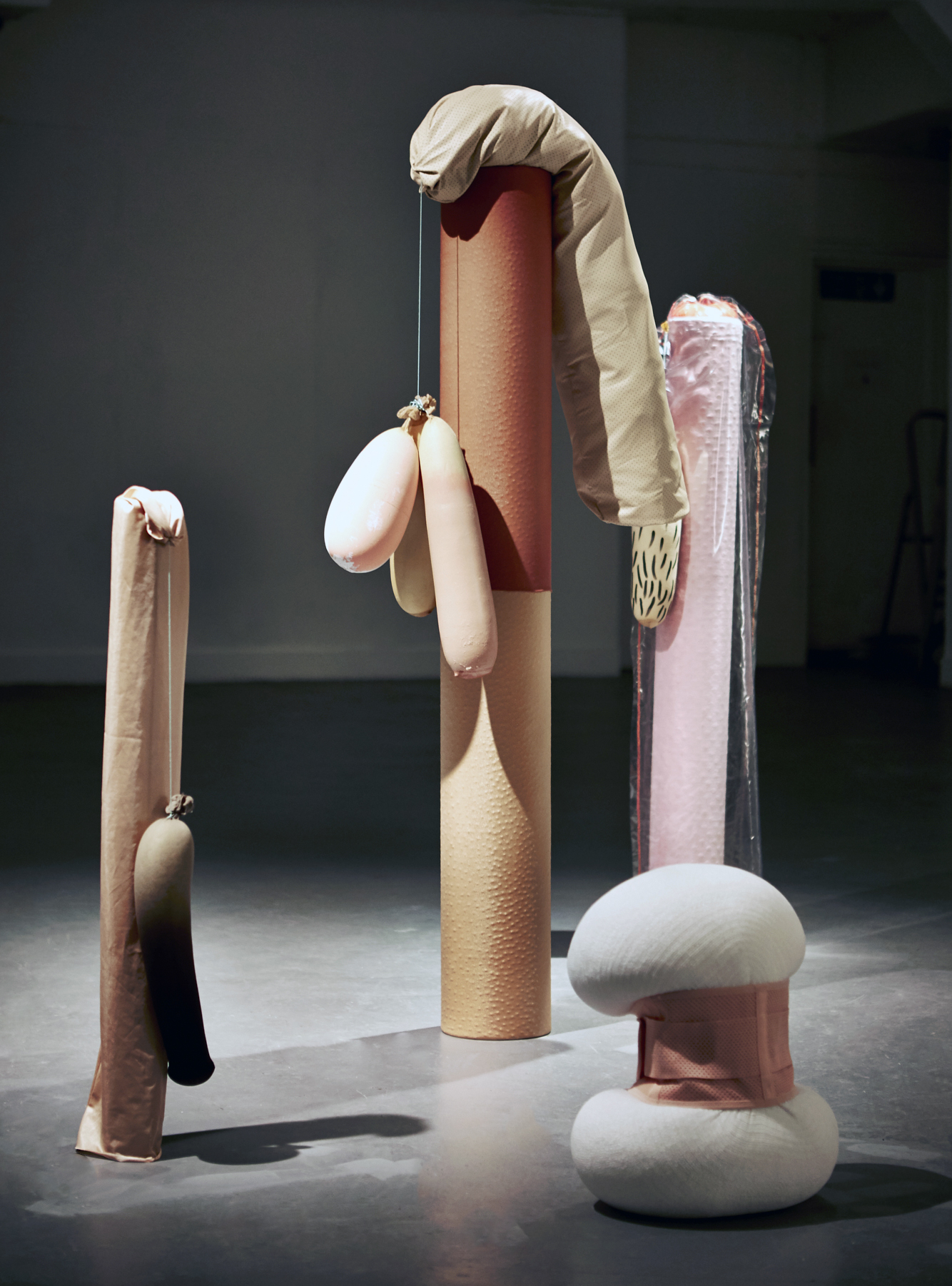
Ingrid Berthon-Moine considers the body as a playground. She successively showcases hairy chests evoking pubes, menstrual blood inducing lipstick, or even penises struggling to get hard. Mostly with a humorous touch, sometimes with a hint of bitterness, her work tries to examine the way deconstruction – or quite oppositely social constructions – impacts our behavior.
Ingrid Berthon-Moine is a French visual artist based in London. She graduated from the Goldsmiths University of London in 2017, with a Master of Fine Art. In 2020, she created the projet @lackitlikeit on Instagram where she interviews working women in artistic and creative industries on the concept of ‘lack’.
“What does it mean to be a woman who photographs men? What happens when the equation from thousands of years ago such as men being actors/creators/ watchers and women being passive muses/ objects is discomposed ?” These are the issues she tries to address in her work. For Faire corps, Pauline Rousseau presents a photograph out of her series “Les Chefs d’œuvres du Louvre”, which focuses on masculine nudity. She desacralises some of the Louvre’s masterpieces whilst emphasizing the many paradoxes of virility.
Pauline Rousseau graduated from l’École du Louvre and l’École Nationale Supérieure de la Photographie de Arles. Hegemonic masculinity is her subject of choice.
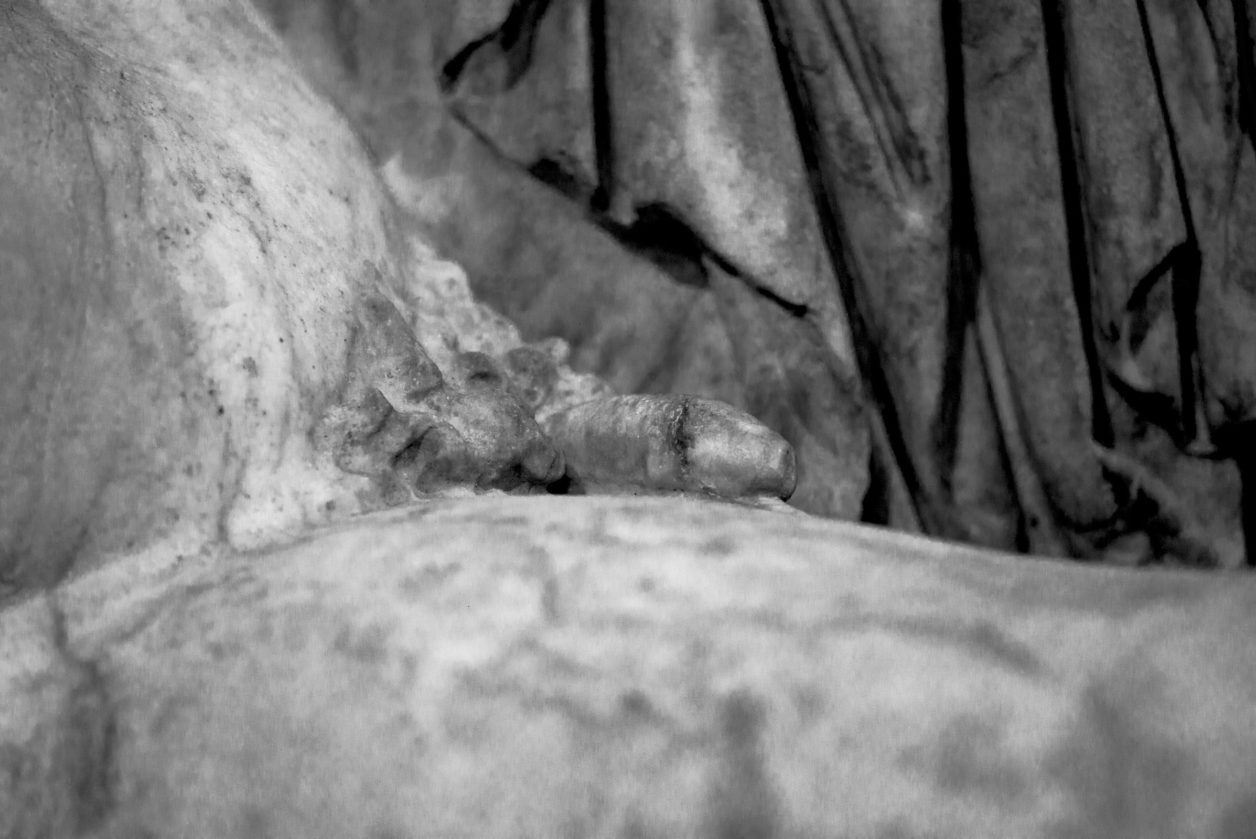
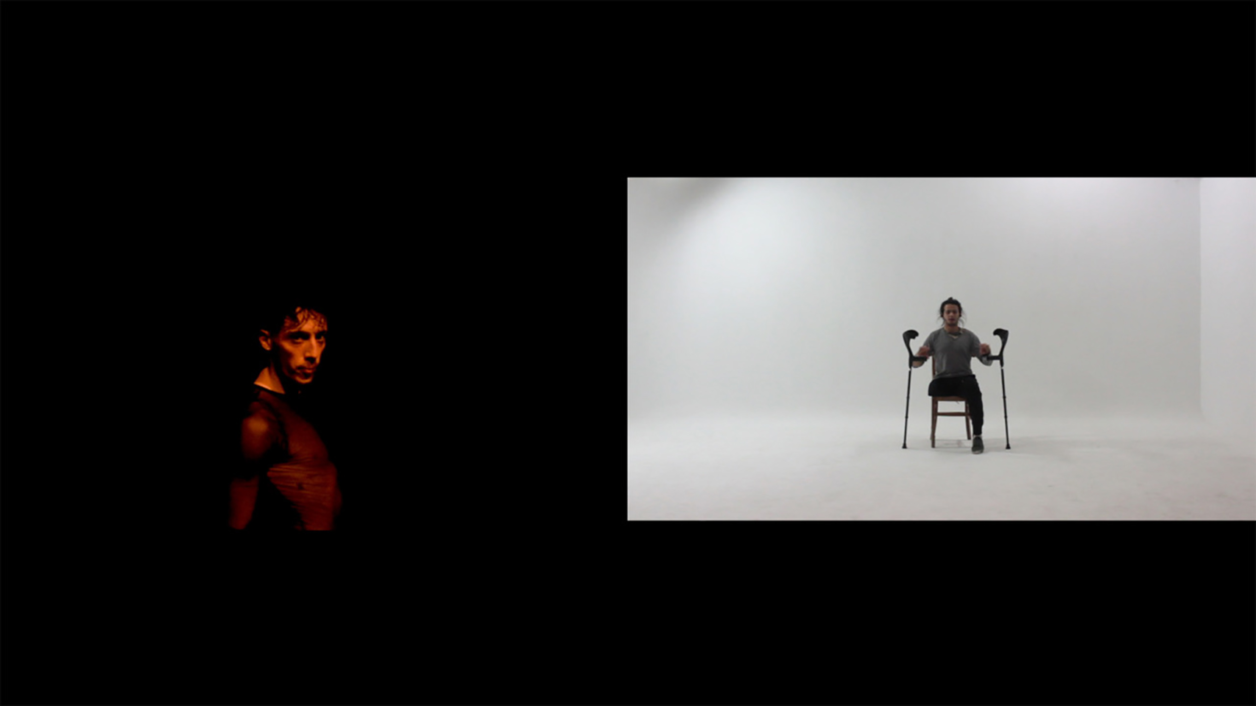
For Faire corps, Sabrina Belouaar, showcases two pieces of work. The first one, Henna, a monochrom made from henna, is a way to wipe the slate clean of a very white, masculine history and to give voice to non occidental women. With her second piece of work, BATTLE, Sabrina Belouaar stages two dancers: Brahim, an amputee, and Gwendal, a homosexual. Both of them unfold their bodies to better enforce their stories, their identities, and their presence in a still homophobic and ableist society.
Sabrina Belouaar is a Franco-algerian artist, born in 1986, in Charenton le Pont (Paris). Her work references her personal history, shaped by her identity but above all shaped by her status as a racialized woman. She manages to create political and sensible works of art through the engrafting of her own cultural heritage in plastic forms. Through her works, she assembles these social and political issues though grounded in a contemporary world tainted by marginalisation and racism. The question of identity and, more generally, of post colonialism is at the core of her artistic engagement.
When Marion Mounic leaves for her first artistic residence in Morrocco, she longs to enrich her artistic practice as much as she looks to better understand her origins. She wanders on the streets – but not that much -, she inspects and sometimes shoots what she sees, but mostly she keeps quiet and listens to the people she meets. In her host family, her attention is captured by the uninterrupted presence of women in the kitchen. She is obsessed by the consistency of their movements, similar to a dance, by the smoke coming out of the pressure-cookers and by the mist covering the windows. What are those domestic machines? Are they the symbol of an alienating solitude or of a liberating force?
For Marion Mounic, the kitchen becomes, with those pressure-cookers, a non-mixed space of creation where art is being made through a sequenced choreography. Returning from Marocco, the artist brought back three pressure-cookers and placed them on various motors, such as a blender and mirror balls. The speed varies silently, depending on the machines, as there are many different rhythms and women.


Standing before us is the artist himself : he’s facing us, dressed in his hairless flesh. Before painting, Abel Techer takes his clothes off, covers himself up with gel, and lets his razor blade slide against his skin. The blade cuts every single one of the hair his body creates : the ones on his legs, on his pubis, on his chest, his face and skull. Abel Techer embodies a navigating body, free of the normative attributes of gender. The sfumato technique he borrows from Italian Renaissance painters enables him to fall outside frameworks, limits and outlines. So much so that everything is transluscent and blurry in his paintings, everything is diffuse. On this oil painting, Abel Techer represents himself inside a porcelain ornament next
to which he grew up and close to which he questioned himself. It’s another fragment of his privacy.
Abel Techer was born in 1992 in La Réunion, where he still lives and works. He studied in l’École Supérieure d’Art de La Réunion, where he earned his DNSEP in 2015 with honours. He also studied at the Escuela Superior de Arte y Diseño de Alicante (EASDA) in Spain.
Through the series 40 years 70 kg, showcased in Faire corps, Elea Jeanne Schmitter questions the notion of neutrality. Being a 40 years old white male weighing 70 kg is considered the universal average. This reference point creates a data-gap, as well as it establishes a form of symbolic violence. It conditions most of our everyday infrastructures and equipments, at the expense of the confort, health, security of those who do not fall in these predefined norms, to the point where it can sometimes endanger their lives.
Elea Jeanne Schmitter is a visual artist born in Auxerre in 1993. After her graduation at the University of Concordia in Montréal in 2018, she joins the school Kourtrajmé under the guidance of the artist JR in 2020.
Elea Jeanne Schmitter, 40 ans 70kg, 2020, Courtesy PARIS-B
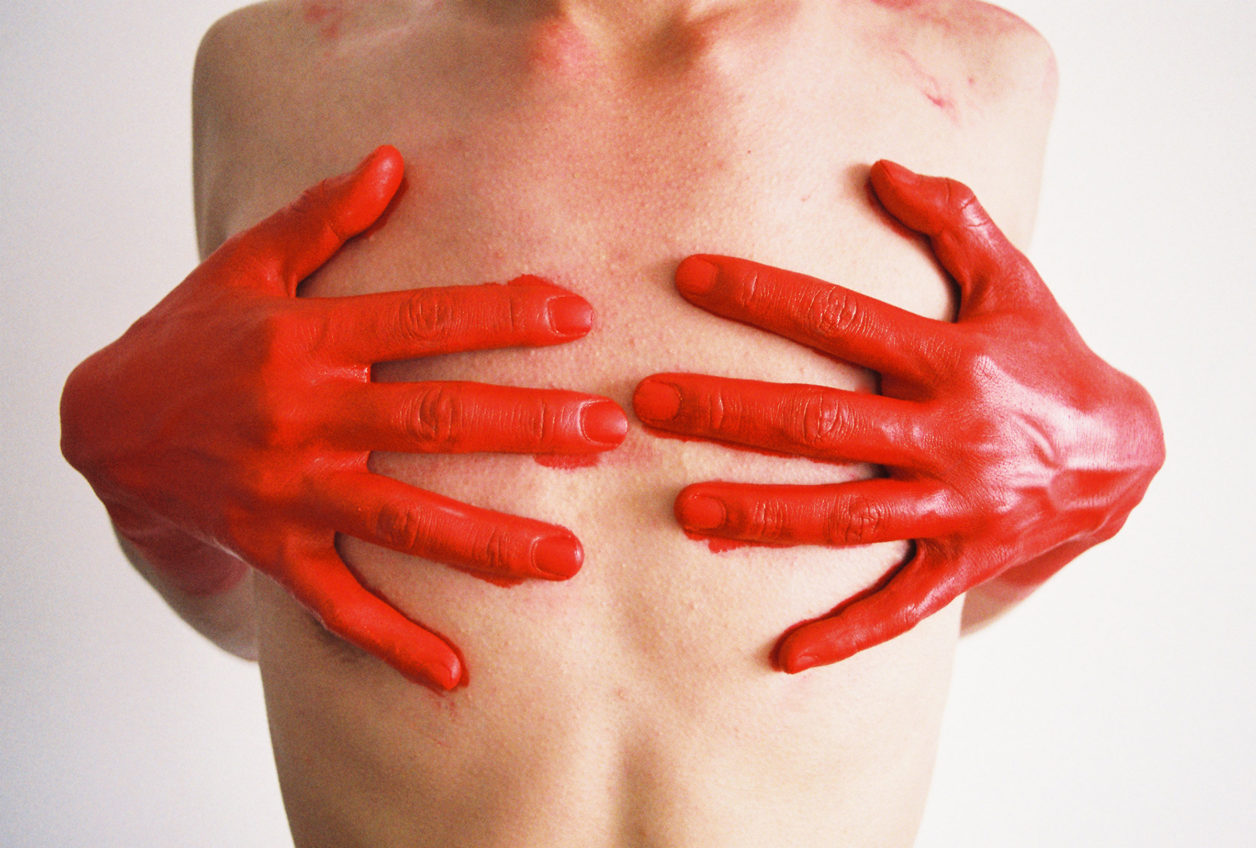
The theme of sexuality is recurrent in Ren Hang’s work: naked nested bodies, single women smoking on a roof or naked in a tree, scenes of kisses, hugs, always imbued with great poetry. One can read in his work, which has already been censored several times, the deep malaise of Chinese youth, but also the ties that bind them and the mutual trust they have.
Although Ren Hang said his work was not intentionally political, his art confronts repression of sexuality and queer identities in mainstream Chinese culture. Throughout his career, Ren used an analog camera, shooting friends rather than models, and resisted ascribing meaning to his work.
It would appear that we are looking at a chrysalis hosting two curled up beings, two bodies about to hatch and come to life. Or is it a shroud, imprisoning two inert organisms? With the molding of her own body, Sarah Trouche creates an unclear and paradoxical impression on me; I don’t know if I am to project on this work resilience or hardship.
Sarah Trouche is a French visual artist born in 1983. She pursues her studies at the Beaux-Arts de Paris, from which she graduates in 2007. She completes her curriculum at the Art Center College of Los Angeles (2007) before she earns a Master Performance making degree at the Goldsmiths University of London in 2008. Sarah Trouche was nominated Chevalier de l’ordre des Arts et des Lettres in 2019.
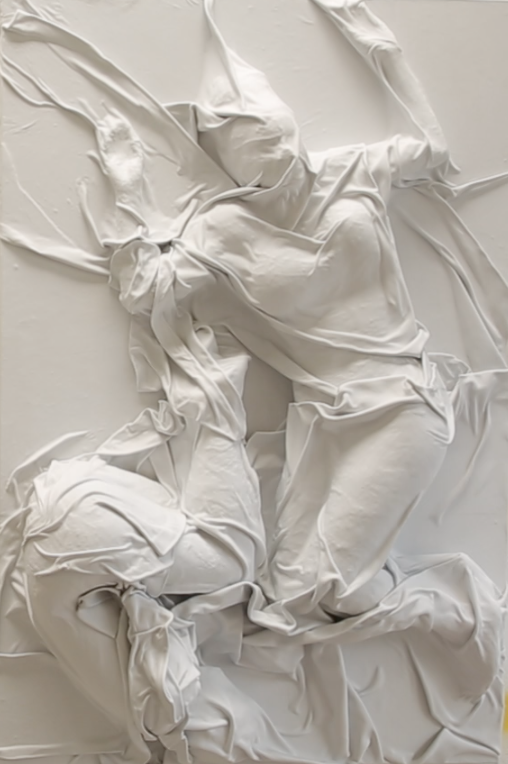
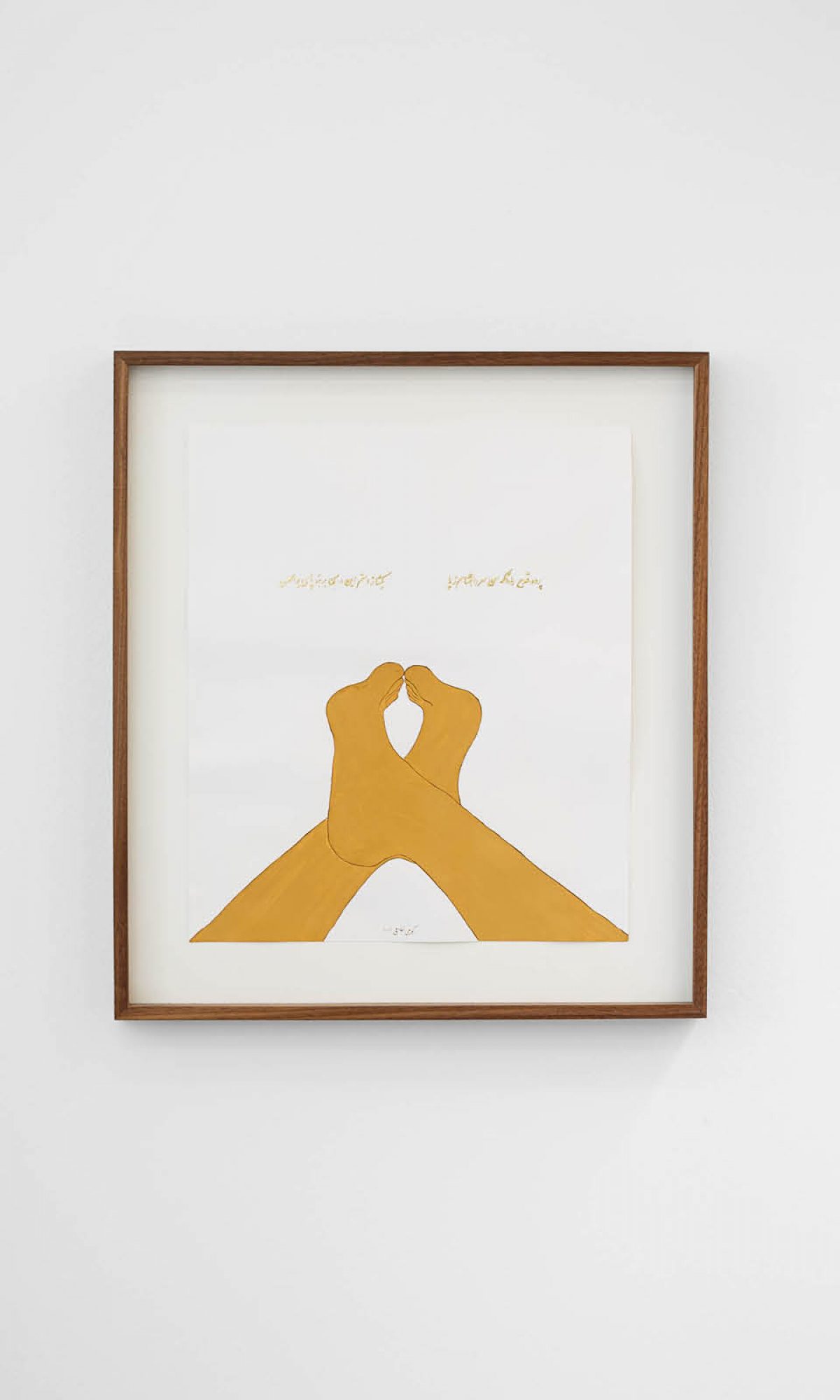
Hugo Servanin’s work creates a resonance between the myths and representations shaping our bodies and the properties of the materials and technologies he uses. His researches were first focused on the existing bond between the body and its representations. He would exploit the inherent codes of sculpture work as well as those of the flesh: the defects of a molding were considered as scars. Later on, he started using moving plastic materials that symbolically brought to life the bodies he sculpted: rotting plaster marks the ending of life, and breaking porcelain infers to bone fragility.
In Faire corps, we witness the birth of one of his Giants. All along the exposition, a body takes form, without it being possible to identify his gender, class or social race. The Giant is stripped from any kind of identity, he is free to choose.
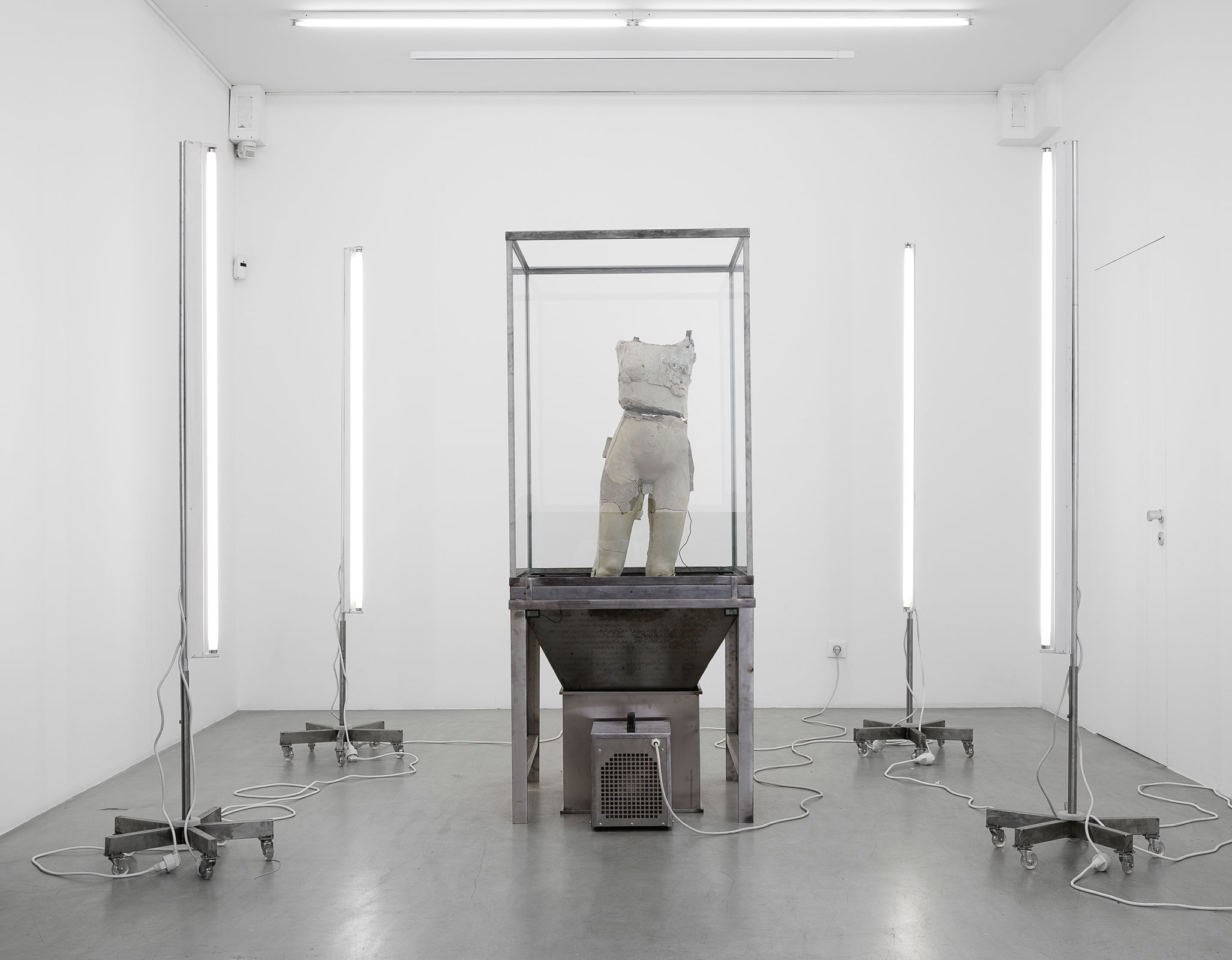
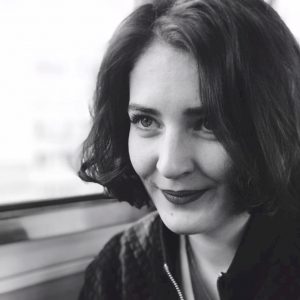
Born in 1997, Camille Bardin is an independent art critic, art curator and fonder of the podcast PRÉSENT.E. She first writes for several reviews, before committing to the Jeunes Critiques d’Art collective, which supports independance and engagement in art criticism. By 2019, she becomes its co-president and co-founds the international confederation YACI the same year. Since 2020, she hosts a podcast titled PRÉSENT.E which offers to dive in the often private process of creation, and now counts about 50 episodes. Today, she also participates in drafting exhibition catalogues and monographs for several galleries and institutions. She co hosts the show Traversée and presents the podcast Pourvu Qu’iels Soient Douxces every month, produced by Projets média and thought out by Jeunes critiques d’Art. She is laureate of the Prix AICA in 2021.